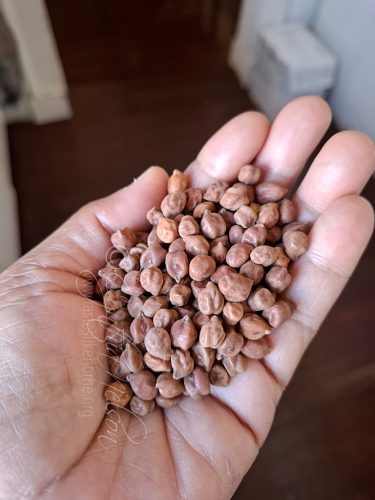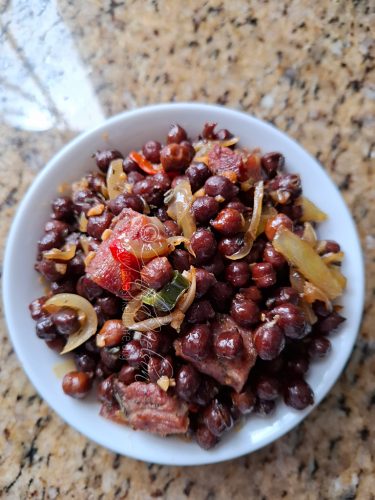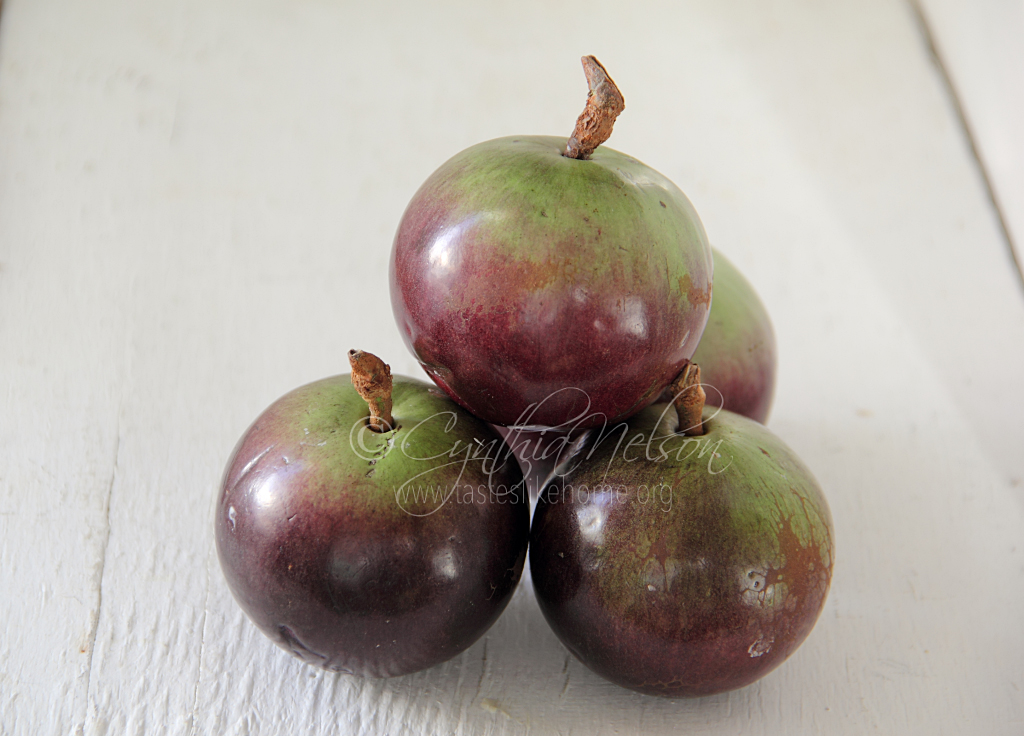Listen to this article:
Audio Player Guess what I found at the market last weekend? Star apple! Yup. Grown here (in Barbados)! I did a double take as I passed the stall and almost whispered in question, doubting my eyes, “are those star apples?” When the vendor nodded I followed up with “were they grown locally, here in Barbados or are they from Guyana?” She laughed at the surprised look on my face and told me that they were grown here. She was selling them for a friend who has a tree. I didn’t even ask the price. I happily bought 4 paying Barbados $8 for them (US$4).
Guess what I found at the market last weekend? Star apple! Yup. Grown here (in Barbados)! I did a double take as I passed the stall and almost whispered in question, doubting my eyes, “are those star apples?” When the vendor nodded I followed up with “were they grown locally, here in Barbados or are they from Guyana?” She laughed at the surprised look on my face and told me that they were grown here. She was selling them for a friend who has a tree. I didn’t even ask the price. I happily bought 4 paying Barbados $8 for them (US$4).
I had not eaten star apple since I left Guyana in 1998 so this was quite a treat for me. It is funny how you react to things from home that you have not seen or experienced in a long time. Back in Guyana, star apple was not a seasonal fruit I looked forward to having, if I happened to see them, I’d buy, but I didn’t go in search of it as I would say, mangoes, kuru, pineapple, sapodilla or guavas. What I remembered of the fruit was its beautiful colour and star design when cut crossways and that sticky latex that stained and had your lips pasting together! (lol).
I ate 2 when I got home and had the other 2 the following day.

Did you know it is also known as milk fruit and star plum? This fruit can be found in other parts of the region like Jamaica and Cuba. It’s popular in the Philippines, Vietnam, Malaysia, India, China and many other places that have a tropical or subtropical environment. It’s a fruit that is rich in Vitamin C and antioxidants and also contains a good amount of fibre and aids in digestion. I like when you enjoy eating or drinking something just because you like it, it tastes good, and is also good for you! It’s currently in season in Guyana so be sure to get some star apples.
Delicious leftovers
A friend brought me a packet of fresh frozen Bangamary from a recent trip to Guyana. Happiness! I did not want anything to eat with the fish, I simply wanted it seasoned, fried and piled on a plate to eat. Oh, with loud pepper sauce. I ate to my heart’s content and put the remainder in the refrigerator.
A couple of days later I considered eating the fried fish cold, straight from the fridge but then a thought occurred – make some fish choka! While the fish reheated in the toaster oven, I thinly sliced onions and took a heaped tablespoon of pickled bird pepper from a jar I set a few weeks ago. I mashed the pepper with the back of the spoon, deboned and flaked the fish, squirted some fresh lime juice and mixed it all together. I didn’t need to add salt because the fish was already seasoned. When I was done making the choka, I thought, a hot Sada roti would be righteous with this. Alas, there was no such thing. No worries. I took my bowl of choka and a few crisp lettuce leaves, made wraps and thoroughly enjoyed it.
I love our food. It’s par excellence.
Kala Chana
If, like me, you are into legumes and like using all kinds and varieties, then I encourage you to give Kala chana, also known as black chickpeas, a try. It is mostly found in Indian grocery stores or in supermarkets that have an international food aisle. Years ago, whilst on a trip to Guyana, I had bought some at Mattai’s, (before they had moved over to their larger establishment).
It is smaller in size than the yellow-white variety
(garbanzo) with which most people are familiar. And obviously the colour too. It has a deep brown colour that is more pronounced when cooked, hence being referred to as black chickpeas. It can be cooked the same way as garbanzo, however, when it comes to texture and nutrition they vary.
Kala chana is firmer in texture when cooked and does not taste as creamy as the garbanzo. It can stand up to long cooking without breaking down because of its coating/skin.
Kala chana is higher in fibre, iron and antioxidants than garbanzo.
Both varieties are good for people managing their blood sugar levels, registering low on the glycemic index.

Kala chana takes a little longer to cook than garbanzo. While you can add it directly to the pressure cooker, I highly recommend an overnight or at least a 6-hour soak before using.
If you have ever picked up a packet of Chana dal and used it to make dhal, then you have eaten Kala chana. Chana dal is Kala chana, with the skin removed. Skinless, it cooks up thick and creamier than split peas. However, with the skin removed, the levels of fibre, iron and antioxidants are lowered a little.
This past week I cooked Kala chana two ways – as a boil and fry with some chopped ham, and I made dhal. I added pumpkin to the dhal for some creaminess and I also mashed the peas with a potato masher as well as used a dhal gutney to break it up further after it had been pressured soft.
That’s it for me this week folks, a little of this and a bit of that.
Cynthia










